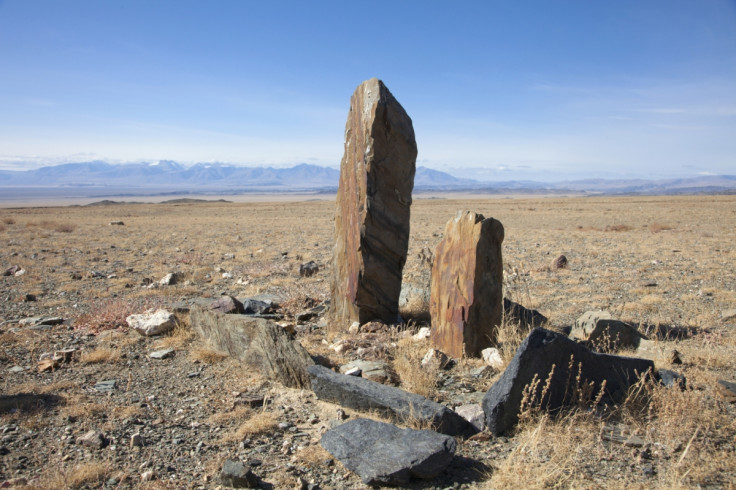Cradle of the Scythians: Graves of 100 nomads buried 2,500 years ago excavated in Russia's North Altai

The 'cradle of the Scythians' has been discovered in Russia's North Altai region, with 100 nomad graves excavated by Russian and Polish archaeologists. The team studied the necropolis over the course of the year and found each of the 100 mounds contained a single skeletal grave.
The site is the largest ancient graveyard in the North Altai ever found. The nomads buried at the Mangerok site are believed to be Scythians, a notoriously aggressive group of people who were among the first to master mounted warfare. They dominated parts of Eurasia for almost 800 years and lived in the North Altai between the fifth and the third century BC.
According to the Polish Press Agency, archaeologists believe the area to be the cradle of the Scythian cultural model. Most of the previous Scythian graves found had a monument, such as a boulder, placed on the eastern side. At the site in Mangerok, boulders and stone steles were found on the western side.
Łukasz Oleszczak, from Jagiellonian University in Kraków, said: "This year we conducted excavations within three mounds covered with stone embankments. Each mound contains a single skeletal grave. Unlike most objects surveyed in previous seasons, this time the graves almost completely lacked equipment.
"Just a few metres from one of the studied mounds, we have found a fallen stone stele, oblong boulder which functioned as a monument, referred to as balbal by Russian archaeologists. This type of installation often accompany sepulchral objects from the Iron Age in the Upper Altai."
Another 16 graves were found a bit further away in an alpine region of Altai with similar characteristics, leading researchers to believe they were built by the same community.
Along with the graveyards, archaeologists also found the remains of a settlement dating to around the second century BC. The team believes whoever was living at this village was under the influence of the Huns on account of the fragments of pottery and bone tools found there.
"We hope that next season we will more precisely date the cemetery and through collaboration with geologists reconstruct the history of the alpine landscape of this area," Oleszczak said.
© Copyright IBTimes 2025. All rights reserved.






















